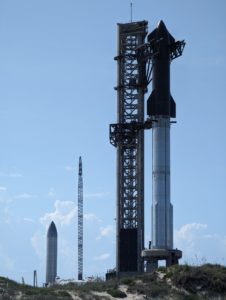
2024 is the year to start paying attention
At this moment, the space industry is witnessing a marked convergence of advancements. In 2023, U.S. launch providers set a new benchmark by conducting over 100 orbital launches in a single year, a record that is projected to be surpassed in 2024. This achievement is set against the backdrop of the introduction of multiple of the world’s largest and most capable rockets, all at the same time. Concurrently, the adoption of reusable rocket technology is enabling more sustainable and cost-effective space missions. This period of technological innovation is further characterized by a competitive atmosphere, with a notable space race among U.S. companies and increased global competition, especially from nations like China. Adding to this dynamic environment is the emergence of the Artemis era, heralding a new phase in lunar exploration with the next crewed mission to the moon expected in 2025. These simultaneous developments suggest a significant evolution in the space industry, heralding an era of enhanced capabilities and unprecedented opportunities in space exploration. While the industry, at times, has a reputation for moving slowly, we have already passed that phase for these mentioned advancements. Starting this year, we are poised to witness the explosive and fast-paced results of all these developments.
Why is this important?
These advancements extend beyond the space industry, as we may be approaching a point similar to when airlines became accessible to the masses. This shift carries substantial and largely uncharted implications. Consider this: Falcon 9, the current workhorse of SpaceX, can carry up to 22.8 metric tons to Low Earth Orbit (LEO), while the colossal Starship, slated to potentially commence payload launches in 2024, is designed to transport 100 to 150 metric tons in its fully reusable configuration, and even more in its expendable version, all at a fraction of the cost—potentially less than 10% per kilogram to LEO compared to Falcon 9. With such significant increases in payload capacity and cost-efficiency, affordable space travel is on the horizon, reshaping life on Earth.
These developments hold the potential to revolutionize various aspects of daily life, including internet and cell phone connectivity, weather monitoring for enhanced predictions, implications for national security, the emergence of space tourism, advancements in health and medicine, and scientific discoveries that could deepen our understanding of Earth and the universe. As we embark on this transformative era, paying attention to these developments is not mere curiosity; it acknowledges the profound, albeit uncertain, impact they may exert on our future.